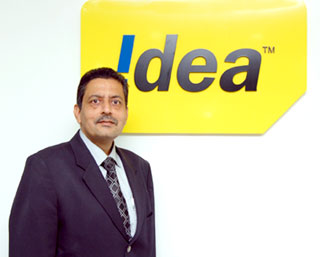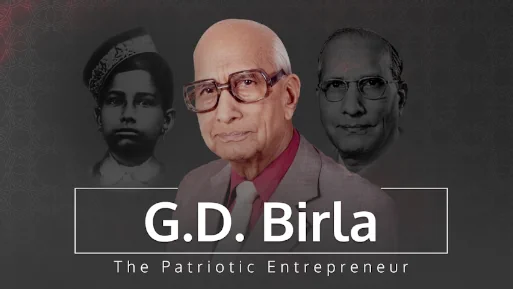'Our next growth trajectory will be in 3G, 4G services': Mr. Himanshu Kapania, MD, Idea Cellular
01 January, 2016 | The Hindu Business Line
ShareRajesh Kurup
The Hindu Business Line
01 January 2016
Idea Cellular MD Himanshu Kapania sees more potential in rural, small towns for data services
 When Himanshu Kapania became the Managing Director of Idea Cellular in 2011, the company had just transitioned from being a regional player to a pan-India operator. This was also the period when the industry structure changed from having six operators to 16, with intense competition coming in. Idea Cellular, under Kapania, not only weathered it but also emerged the clear No.3 operator. A far cry from 2006 when the Aditya Birla group took over a loss-making entity that didn't even have the capital to expand as a regional player. The turn around was achieved through a transition from being a voice operator with limited spectrum to a strong wireless broadband service provider. In 2010, Idea had a total 100 MHz of spectrum. Now, it has a total of 285 MHz for which the company has spent Rs 51,000 crore. Having added 130 million subscribers in the last 5 years, Kapania says that Idea is now set up for the third phase of growth that will be focussed on data services using 3G and 4G technologies. In a conversation with Business Line, Kapania shares his outlook for the company and the sector. Excerpts:
When Himanshu Kapania became the Managing Director of Idea Cellular in 2011, the company had just transitioned from being a regional player to a pan-India operator. This was also the period when the industry structure changed from having six operators to 16, with intense competition coming in. Idea Cellular, under Kapania, not only weathered it but also emerged the clear No.3 operator. A far cry from 2006 when the Aditya Birla group took over a loss-making entity that didn't even have the capital to expand as a regional player. The turn around was achieved through a transition from being a voice operator with limited spectrum to a strong wireless broadband service provider. In 2010, Idea had a total 100 MHz of spectrum. Now, it has a total of 285 MHz for which the company has spent Rs 51,000 crore. Having added 130 million subscribers in the last 5 years, Kapania says that Idea is now set up for the third phase of growth that will be focussed on data services using 3G and 4G technologies. In a conversation with Business Line, Kapania shares his outlook for the company and the sector. Excerpts:
— Mr. Himanshu Kapania, Managing Director, Idea Cellular
The next phase of growth is about data services. How is Idea gearing itself to be ready for this?
We have come a long way. In 2010, we generated EBITDA levels off Rs,500-2,000 crore, to last year when we generated EBITDA levels of more than Rs 10,000 crore. This year, based on the first half trends, we are expecting to post Rs 12,000-13,000 crore. So we have grown as 6.5 times, and that cash flow that we have generated over the years has been used to strengthen the company by buying spectrum and to strengthen the company's overall presence.
The company is geared to take the next growth trajectory based on massive expansion of 3G and 4G services. We intend to replicate the success of our voice coverage, just like we went to 300-400 million population coverage to 1 billion for voice services, we intend to replicate the same thing from 250 million at this point in time in the next 3-4 years. What we are seeing in mobile data is just tip of an ice-berg, expected to take off as a very large population is in dark ages as far as internet is concerned. This gives us a huge amount of confidence that this growth trajectory will happen.
You have consciously adopted a strategy to move first into tier-2 and -3 cities for 3G and 4G services. Other operators have first moved to metros and top-tier cities. Has this played out well for you so far?
Idea Cellular has about 175 million subscribers, of which 60-62 per cent are from rural and small time markets. Our brand positioning is far more mass than premium oriented. So, we have the first mover advantage. Of the 75 towns where we are launching 4G services, 45 towns have no 4G coverage at all and we will be the first to launch. We strongly believe that there is much potential in the small towns and hinterlands of the country if they are scientifically s;elected.
But isn't this strategy impacting your average revenue per user?
We can't make such sweeping statements. When we look at rural, we are discussing Kerala, Maharashtra, high-income categories in Haryana and Punjab, cotton belt in Madhya Pradesh (who have both income and education). The next round of 300 million users are coming in from bottom end of the pyramid. The experience of e-commerce companies also point to the fact that growth is coming in from small towns and cities.
Other big operators such as Airtel and Vodafone have increased capital expenditure on network. Some say this is due to the impending entry of Reliance Jio and others say they are trying to plug complaints of call d;rops. Are you planning to increase investments?
There is too much credence being given to the fact that change in capital expenditure is due to the entry of Reliance Jio or on account of call d;rops. Of the total Rs 51,000 crore, Idea spent most of its Rs40,000 crore to acquire spectrum during the auctions held in 2014 and 2015 to renew spectrum and buy a large quantum of 3G and 4G spectrum. Now, our plan is to expand our coverage. We have to expand our 2G coverage in the 7 circles where we acquired spectrum. We have been spending Rs 3,000-3,500 crore for the last 3-4 years, and we will continue to do that. When our network coverage crosses about 1.1-1.2 billion population, we will probably then stop our investments in 2G. On wireless broadband, initially, when we got 3G spectrum in 2010, the eco-system was not ready and equipment were very expensive.
All of this has changed. Now, 3G phones are available at about Rs 3,000 and 4G phone prices are expected to fall below Rs 4,000. All of this prompts us to make more investments. We raised our capex guidance to Rs 6,500 crore (for FY16) from the earlier Rs 3,500 crore and most analysts today expect us to sustain this for a 2-3 year period. We are announcing 40,000-45,000 base stations for a combination of 2G, 3G and 4G in the next one year and we believe in the next three years our wireless broadband network will cover 750-800 million population.
Earlier, you had said Idea Cellular will take a wait and watch approach on 4G, but now you have launched the services. What is the reason for this change?
There has been a very sharp rise in consumers buying 3G and 4G devices. Of the total 170 million Idea's subscriber base, we now have more than 55 million who owns a smartphone that supports 3G or 4G. These smartphone owners had upgraded in the last one year, and out of the 55 million, 6 million have 4G devices.
The challenge is that only 20 million are using our 3G services, with most of them using it as a camera or a video recorder. For these customers to use internet services is a long-drawn process. The task of telecom operators like us is to make sure that the next round of 500 million consumers, who understand the power of voice, will have to be educated on the powers of internet. We understand that a transformation is happening from everything physical to digital but we are still waiting for consumer transformation.
Idea eyes 4G edge in non-urban areas
Rajesh Kurup
Hindu Business Line
Mobile company has no competition in 45 of 75 towns where it offers 4G
At a time when telecom companies are looking to milk high net worth users in metros and top tier cities with 4G mobile broadband services, Idea Cellular is adopting a different strategy: to take the first-mover advantage into non-urban areas. Of the 75 towns it has launched 4G services so far, there are no other operators offering wireless broadband in 45 of them. "We strongly believe that there is much potential in the small towns and hinterlands of the country if they are scientifically s;elected," Himanshu Kapania, Managing Director of Idea Cellular, told Business Line.
"We have about 175 million subscribers overall (including 2G and 3G), of which 60-62 per cent are from rural and small-time markets. Our brand positioning is far more mass- than premium-oriented. So, we have the first-mover advantage," Kapania added. The telecom honcho believes there is a misconception that going rural means lower revenue. "The next 300 million mobile internet users are coming in from the bottom end of the pyramid. The experience of e-commerce companies also points to the fact that growth is coming in from the small towns and cities," he said.






